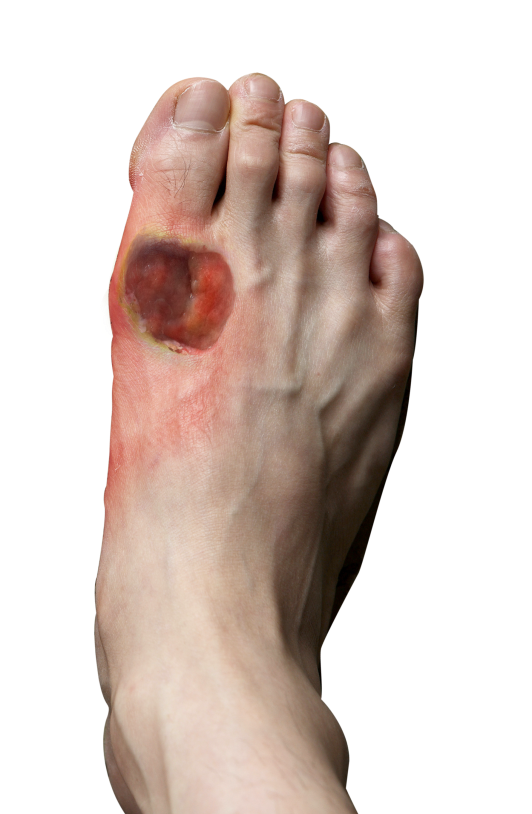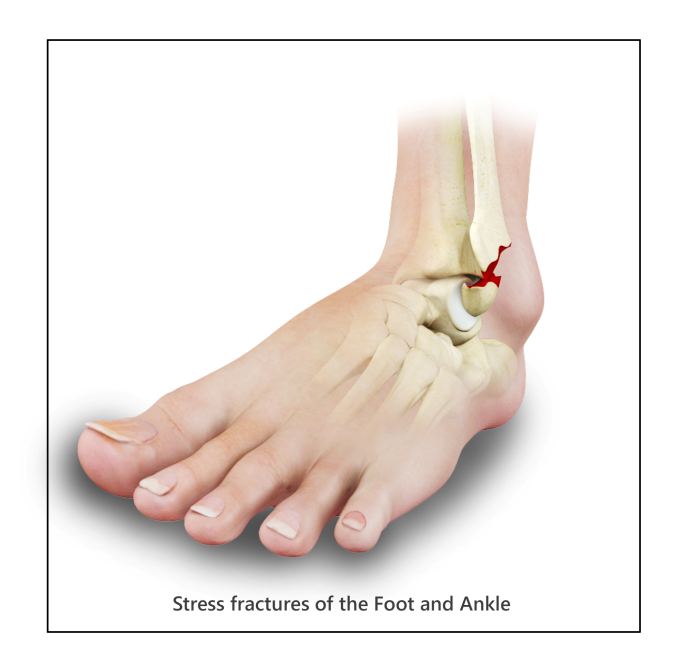Common Foot Problems
Foot Infections
Foot infections may occur after trauma to the foot or loss of tissue because of contamination from foreign material and/or bacteria or fungus. Infections can occur in healthy individuals as well as in those whose health is compromised. Common foot infections include:

Diabetic Foot:Diabetic foot infection is one of the common complications of uncontrolled diabetes. Increased blood sugar levels can damage nerves and blood vessels, leading to loss of sensation and reduced blood flow to the feet. As a result of losing sensation to pain, heat or cold, foot injuries may be ignored and can worsen without intervention. The reduced blood supply also does not facilitate normal healing. Even minor wounds can result in ulcers and eventually gangrene that may sometimes necessitate amputation.
Athlete’s foot: This is an infection of the feet caused by fungus that occurs after exposure to warm moist environments such as sweaty shoes, locker rooms and swimming pools. The skin between the toes appears red, cracked or peeled, and may be itchy.
Gangrene: This condition is characterized by the death of tissues from decreased blood supply and exposure to infection, and is a frequent complication of diabetes. Immediate treatment with removal of the dead tissue is important to prevent the spread of infection, which can be life-threatening.
Cellulitis: This is a bacterial infection that starts in the skin and can spread rapidly to other parts of the body, lymph nodes and bloodstream. Left untreated, it can become life-threatening. Cellulitis most commonly occurs in the lower parts of the leg within small cuts or punctures wounds after surgery, or may be associated with dermatitis, diabetic ulcers or athlete’s foot.
Osteomyelitis: This is a rare bacterial infection that can occur in the bones of the foot, especially when your immune system is weakened or compromised by certain conditions such as diabetes and HIV/AIDS, or after bone surgery. Infection may spread to the bone from overlying skin or from soft tissue infections through the blood supply.
Stress Fracture of the Foot

A stress fracture is a small crack in the bone which occurs from overuse injury. It commonly develops in the weight-bearing bones of the lower leg and foot. When the muscles of the foot are overworked or stressed, they are unable to absorb the stress and transfer it onto the bone, which cracks under the pressure.
Stress fractures result from a rapid increase in the intensity of exercise or sports activities. They can also be caused by a change in the surface of a sports activity (such as changing from soft clay court to hard court in tennis), increased physical activity without adequate rest and wearing worn-out or uncomfortable footwear. Athletes participating in certain sports such as basketball, tennis and gymnastics are at a greater risk of developing stress fractures as they experience repeated stress on the foot each time they land on a hard surface.
The most common symptom of a stress fracture is pain, which usually worsens with activity and decreases with rest. Swelling, bruising, and tenderness may also occur.
Your doctor diagnosis the condition after evaluating your symptoms and risk factors, and performs a thorough examination of the foot and ankle. Diagnostic tests including X-ray, CT, MRI or bone scans may be required to confirm the fracture.
Stress fractures can be treated with non-surgical approaches such as rest, limiting physical activities, wearing protective shoe inserts, and immobilization with casts or braces in order to allow the injury to heal. Surgery may be required if the fracture does not heal completely with these methods. Your doctor makes an incision over the fracture area and uses internal fixators such as screws, pins or plates to hold the broken bones together until complete healing occurs.
Some of the following measures may help to prevent stress fractures:
- Start any new sport activity slowly and progress gradually.
- Cross-training or altering exercises can prevent overstressing one part of the body.
- Maintain a healthy diet and include calcium and vitamin D-rich foods in your diet.
- Wear well-fitting and comfortable footwear specifically designed for the particular sports activity and avoid using old or worn out shoes.
